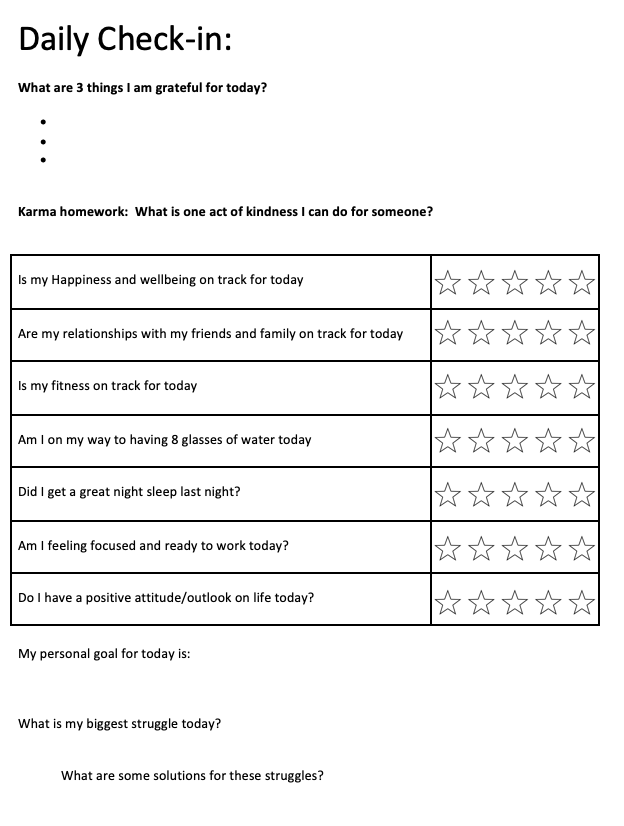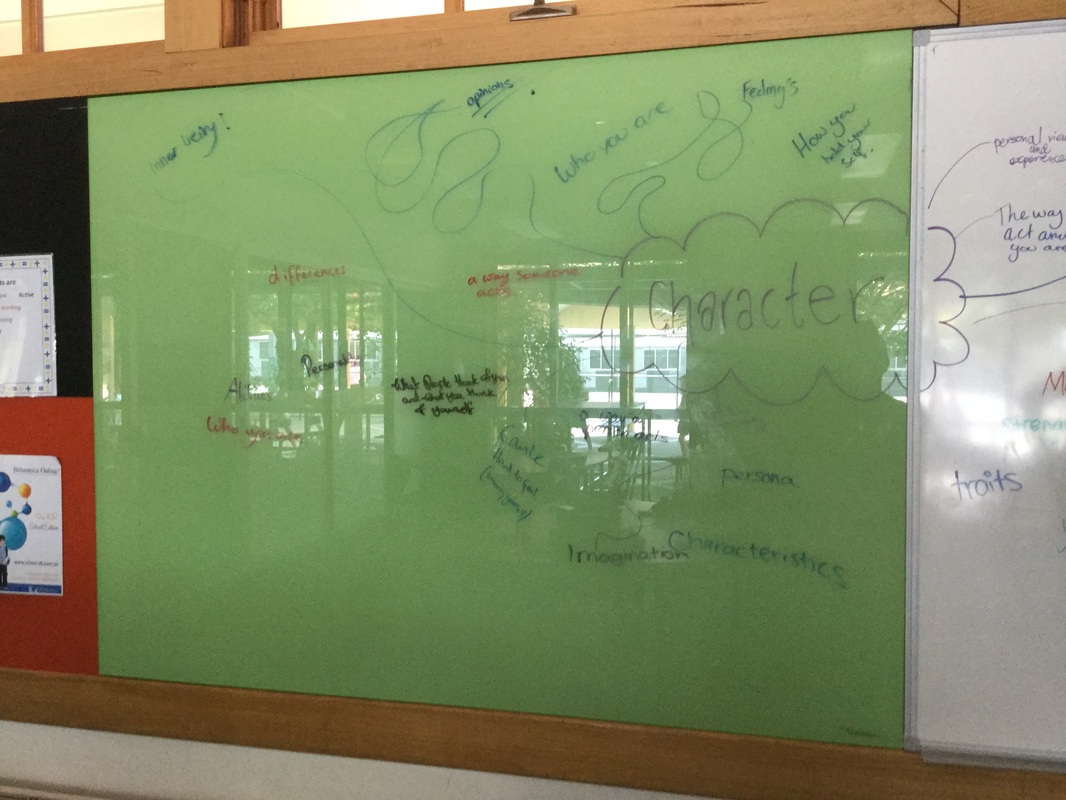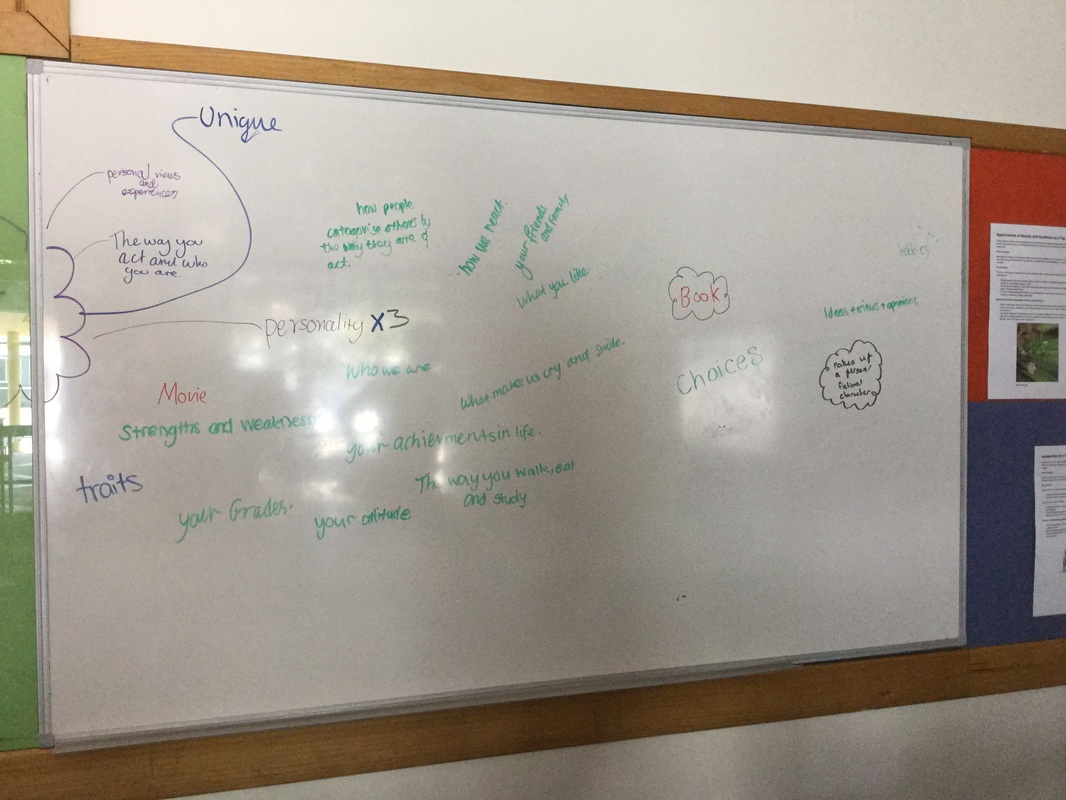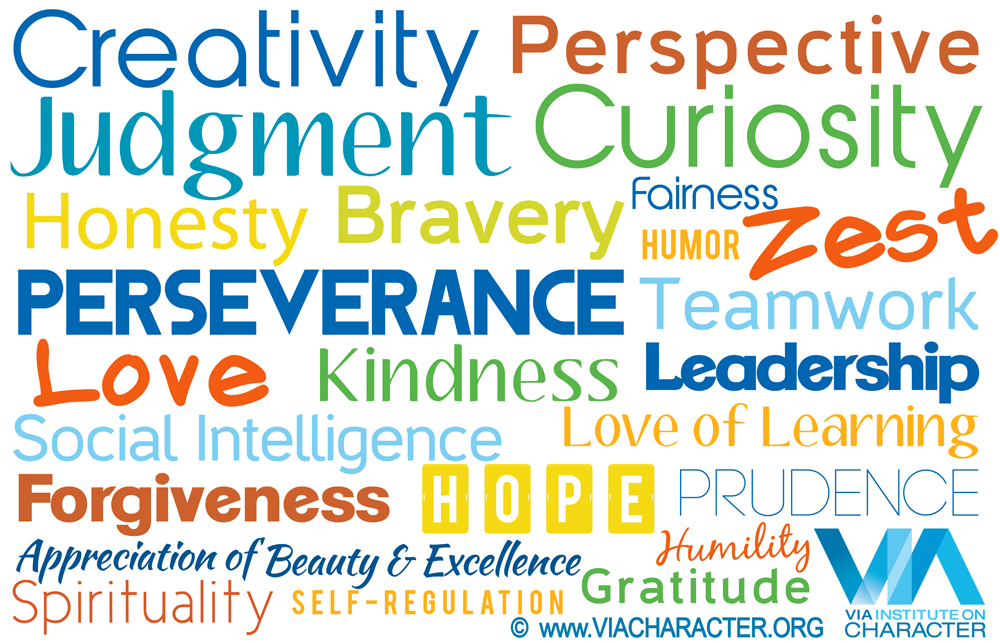Standard 1: Know students and how they learn
2020 - 2022 Application
Today, research and experience in increasingly global classrooms reveal the complex interplay of factors that influence a student's learning.
Knowing the students we teach means more than merely acquiring social or administrative information; students' names and ages, something about their friendship circles, a bit about their family backgrounds, a few statistics from their academic record are all important but we must also know our students as learners.
Developing an in-depth understanding of each learner enables teachers us as teachers to:
1. Create a psychologically safe environment for every learner.
2. Determine each student's readiness for learning.
3. Identify multiple access points to the curriculum to increase engagement and success.
4. Develop and demonstrate greater emotional intelligence in the classroom.
EXAMPLE 1: Student survey
When meeting a new group of students for the first time I encourage them to fill out a quick survey to ascertain the types of learning activities they enjoy and feel comfortable with. I encourage students to reflect honestly on their strengths and to share any discomforts or challenges they may have experienced in the past. This enables me to gain a very quick summary of the student’s learning style, their emotional and social intelligence and how they see themselves within the class group.
EXAMPLE 2: Reflecting on their learning
Studies have proven that students who reflect on their learning experiences help to enhance its meaning and encourage insight and further learning. While reflection is vitally important for students to see their progress and map out where they are headed, it also provides the teacher with insight in to what the student has learnt, what they have enjoyed and what they might find challenging – how they learn!
Whether it be a Maths test or a Science assignment I regularly provide opportunities for students to reflect on their learning and progress and I enjoy reading their reflections to develop strategies to assist students in their learning journey. I use a number of Habits of Mind techniques combined with technical solutions like padlet, Microsoft forms, and CLASSe/Canvas to gather these reflections.
With the information gathered from both of these examples I am able to plan effective lessons, tailor learning activities and ensure that student learning is enhanced.
Today, research and experience in increasingly global classrooms reveal the complex interplay of factors that influence a student's learning.
Knowing the students we teach means more than merely acquiring social or administrative information; students' names and ages, something about their friendship circles, a bit about their family backgrounds, a few statistics from their academic record are all important but we must also know our students as learners.
Developing an in-depth understanding of each learner enables teachers us as teachers to:
1. Create a psychologically safe environment for every learner.
2. Determine each student's readiness for learning.
3. Identify multiple access points to the curriculum to increase engagement and success.
4. Develop and demonstrate greater emotional intelligence in the classroom.
EXAMPLE 1: Student survey
When meeting a new group of students for the first time I encourage them to fill out a quick survey to ascertain the types of learning activities they enjoy and feel comfortable with. I encourage students to reflect honestly on their strengths and to share any discomforts or challenges they may have experienced in the past. This enables me to gain a very quick summary of the student’s learning style, their emotional and social intelligence and how they see themselves within the class group.
EXAMPLE 2: Reflecting on their learning
Studies have proven that students who reflect on their learning experiences help to enhance its meaning and encourage insight and further learning. While reflection is vitally important for students to see their progress and map out where they are headed, it also provides the teacher with insight in to what the student has learnt, what they have enjoyed and what they might find challenging – how they learn!
Whether it be a Maths test or a Science assignment I regularly provide opportunities for students to reflect on their learning and progress and I enjoy reading their reflections to develop strategies to assist students in their learning journey. I use a number of Habits of Mind techniques combined with technical solutions like padlet, Microsoft forms, and CLASSe/Canvas to gather these reflections.
With the information gathered from both of these examples I am able to plan effective lessons, tailor learning activities and ensure that student learning is enhanced.
|
2016 - 2018 Application
What Students know and how they learn: For optimal learning to take place in the classroom I always aim to support the factors that influence a learners capacity, motivation and disposition to learn - these include a student's physical and intellectual development, as well as their unique characteristics, including their maturity, socio-cultural background and their unique prior knowledge and experiences. Getting to know students as individuals, including what knowledge and experiences they bring to the classroom, and understanding their preferred learning styles, their strengths and limitations, and being sensitive and responsive to these, is one of my key responsibilities and one as a leading teacher I take great pride in making sure I meet. Providing learning experiences in which students can intellectually, emotionally and socially invest in is a must. Connecting learning to the real world: For students to assimilate and accommodate new information effectively, there needs to be a relatively close match between what they have already experienced and the new material that is being taught. It is important to connect what students are learning in the classroom with the worlds they are familiar with at home and in their communities. This greatly enhances students’ learning as it helps them to see the relevance and currency of their school work and motivates them to engage more fully with the content and concepts being taught. EVIDENCE:
2013 - 2015 Application As a leading teacher I understand how students develop and learn. I am aware of the influence of context and culture on behaviour and I always aim to harness this influence to develop students' cognitive capacity and respect for learning. Through varied teaching practices, I foster students' self-esteem, motivation, character, civic responsibility and their respect for individual, cultural, religious and racial differences.
In the classroom I use a variety of teaching strategies to ensure that different approaches to learning are valued and recognised and promote students’ strengths and weaknesses. These different learning approaches are completed through a combination of individual work, pair work and small group work. Students are always involved in the learning process and are often required to build on existing knowledge through multiple means of listening, writing, reading and technological tasks.
I ensure that students achieve a level of success by differentiating tasks and providing individual feedback throughout the lesson. These differentiated activities ensure all students achieve learning goals appropriate to their level of understanding and intellectual development and challenge them to explore and try new things.
Through Learning Area meetings and informal conversations I lead by example and encourage colleagues to select and develop strategies appropriate to the characteristics of individual students and which promote improved student learning. I regularly help teachers to ensure that their curriculum contains activities and tasks which promote 21st Century Skills including; collaboration, communication, problem solving and creativity. My solid understanding of how students learn has enabled me to play a key role in determining the appropriate textbook to be used in both the Year 7 Mathematics and Year 7 Science curriculum for 2013. My knowledge of 21st Century Skills has enabled me to thoroughly evaluate the textbooks for effective teaching and learning strategies and concepts – all of which I have shared with my Head of Learning and colleagues. |
|






